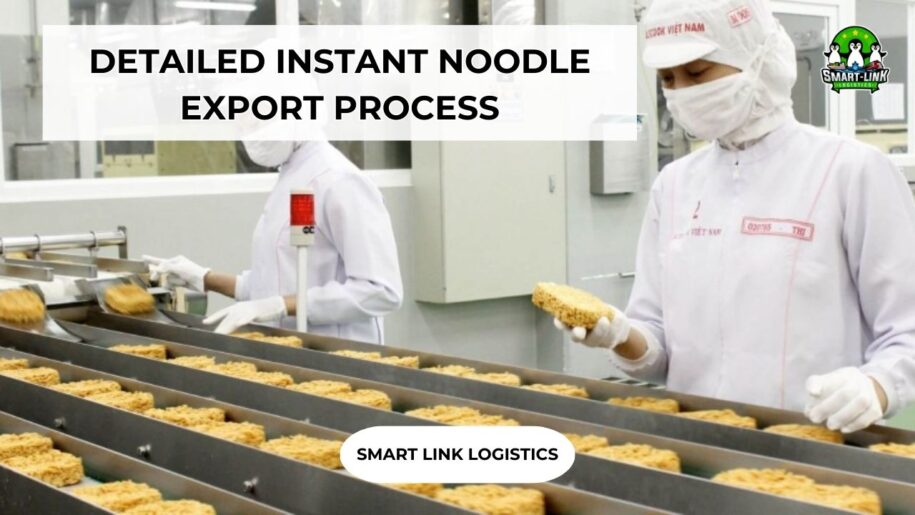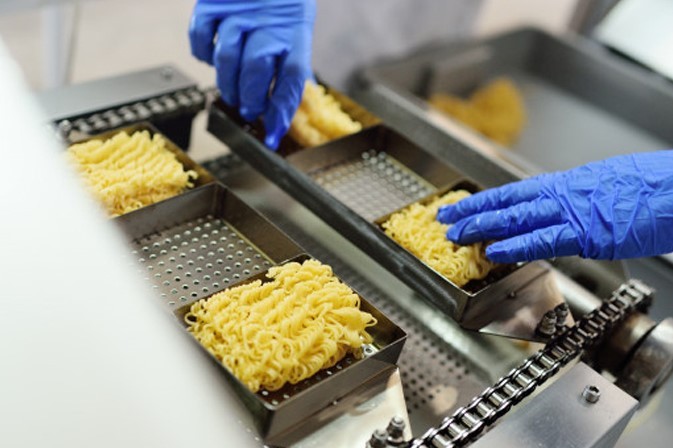
DETAILED INSTANT NOODLE EXPORT PROCESS
Instant noodles – also known as packet noodles or ramen – are among the most popular consumer goods in Vietnam and around the world. Thanks to their convenience, quick preparation time, and diverse flavors, instant noodles have become a promising export product for Vietnam, already present in demanding markets such as the United States, the United Kingdom, France, Germany, Canada, and Sweden. However, exporting instant noodles internationally requires strict compliance with food safety regulations, labeling requirements, customs documentation, and specific technical standards imposed by each importing country. The following article provides a comprehensive overview of the export process for instant noodles, from legal procedures to key considerations for efficient and successful export operations.
1. Policies and Regulations
As food products have a direct impact on consumer health, most countries impose high standards for quality and safety. For instant noodles, exporters must comply with the following legal regulations:
-
Circular No. 39/2018/TT-BTC: Provides guidance on customs procedures for exported goods, detailing the required documentation and steps.
-
Decision No. 10/2010/QĐ-TTg: Regulates the issuance of the Certificate of Free Sale (CFS), which may be required by importing markets.
-
Certificate of Food Safety Eligibility: Mandatory to ensure the product meets hygiene and food safety standards.
-
Certificate of Free Sale (CFS) and/or Health Certificate (HC): Required depending on the import country’s regulations.
Instant noodles are not on the list of prohibited export items, so businesses only need to complete the necessary procedures to proceed with export activities.
2. HS Codes and Export Tax for Instant Noodles
The Harmonized System (HS) code is a critical element in determining the applicable tax rates and trade policies for a product.
| HS Code | Product Description | Export Duty (%) | VAT (%) |
|---|---|---|---|
| 19023040 | Other instant noodles | 0 | 0 |
| 19023090 | Other types of noodles | 0 | 0 |
Choosing the correct HS code helps businesses avoid declaration errors and ensures eligibility for appropriate tax incentives.
3. Packaging and Labeling Requirements
Product packaging must include the following information as required by law:
-
Name and address of the manufacturer
-
Production date and expiry date
-
Main ingredients and nutritional value
-
Instructions for use and storage
-
Country of origin
-
Language: English and/or the official language of the importing country
Proper labeling ensures smooth customs clearance and builds consumer trust in international markets.

4. Required Customs Documents for Export
According to Circular No. 39/2018/TT-BTC, the required documentation for exporting instant noodles includes:
-
Electronic customs declaration
-
Sales contract
-
Commercial invoice
-
Packing list
-
Booking note
-
Other documents (CFS, HC, if applicable)
Depending on the requirements of the importing country, exporters may need to provide additional technical or quality certifications to facilitate customs clearance.
5. Export Procedure for Instant Noodles
The typical export process for instant noodles involves five steps:
Step 1: Document Preparation
Prepare all required documents, including customs declarations, invoices, sales contracts, food safety certifications, and more.
Step 2: Customs Declaration
Submit the declaration through the electronic customs system, either at the registered customs office or the port of departure.
Step 3: Document Review
The customs authority will review the accuracy and completeness of the submitted documents to ensure compliance.
Step 4: Customs Clearance Channel Classification
The system will automatically assign a clearance channel:
-
Green channel: immediate clearance
-
Yellow channel: document review
-
Red channel: document and cargo inspection
Step 5: Clearance and Shipment
Once cleared, the goods can be packed and transported to the destination country.
6. Important Notes When Exporting Instant Noodles
-
Accurately determine the HS code to avoid tax discrepancies or customs violations.
-
Prepare complete documentation, including any required licenses or certificates specific to the destination country.
-
Food safety certification is mandatory to meet international standards.
-
Ensure clear, compliant labeling to meet market acceptance.
-
Thoroughly research the regulations of each target market and adapt your export strategy accordingly.
Conclusion
Exporting instant noodles presents not only an attractive business opportunity but also a pathway to promote Vietnamese products globally. However, successful exports require a solid understanding of legal procedures, customs requirements, technical standards, and import regulations. By preparing diligently and complying with the necessary guidelines, Vietnamese businesses can confidently expand into international markets and affirm their product quality and brand value worldwide.
If you’re looking for the best import-export solutions, feel free to contact us for detailed consultation. If you need legal support or assistance with customs procedures in import-export activities, please contact Smart Link Logistics for fast and efficient consultation. With over 14 years of experience in the transportation field, we are proud to accompany you throughout your journey.
Hotline: + 84 902 964 982 to know more about our services

If you require assistance with international import and export of goods, please contact our team at Smartlink Logistics. We are available to provide you with professional guidance on our services and the necessary customs procedures.
SMART LINK: BEST SERVICE BEST YOU


































